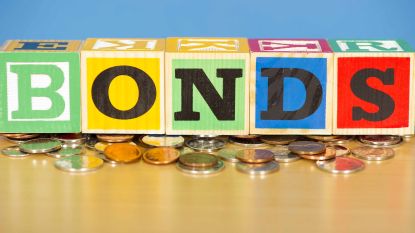Investing can be filled with a lot of industry jargon, such as par value. Par value is a term you may hear in relation to the value of a bond or share of stock. In this instance, we are concerned with the par value of bonds. The more you know about what you are investing in, the less likely you are to invest in something that isn’t right for you.
What is a bond? Bonds are IOUs issued by corporations, federal, state and local governments and their agencies. When you buy a bond, you become a creditor of the corporation or government entity; it owes you the amount shown on the face of the bond, known as par value, plus interest at maturity.
Basic bond jargon Maturity date is the length of time until the bond’s principal is scheduled to be repaid. The maturity date can be short- or long-term. Once the date is reached, the bond’s issuer—whether corporate or governmental—must repay you the full face value of the bond.
Subscribe to Kiplinger’s Personal Finance Be a smarter, better informed investor.
Save up to 74%
Sign up for Kiplinger’s Free E-Newsletters Profit and prosper with the best of expert advice on investing, taxes, retirement, personal finance and more – straight to your e-mail.
Profit and prosper with the best of expert advice – straight to your e-mail.
Coupon rate/discount rate refers to the interest payments that you receive. Typically, it’s represented as a fixed percentage of the bond’s par value. Payments may be made annually or semi-annually, depending on the specifics of the bond.
For example: A bond with a par value of $1,000 and an annual interest rate of 4.5 percent has a coupon rate of 4.5 percent ($45). An investor in a bond with a $45 annual coupon that pays interest semiannually can expect to receive a $22.50 interest payment twice per year.
Current price is a bond’s current value, and is typically what’s discussed when someone mentions “bond valuation.” Depending on several different factors, including market conditions, the current price of a bond may be at, above, or below par value.
What is par value? The par value of a bond, also called the face amount or face value, is the value written on the front of the bond. This is the amount of money that bond issuers promise to repay you at a future date. It is fixed at the time of issuance and, unlike market value, it doesn’t change. Par value is essential for a bond because it defines its maturity value and the dollar value of coupon payments.
Par value vs. market value A bond’s par value is determined by the entity that issues it. Market value is the current price at which a bond can be traded on the open market and it constantly changes as investors buy and sell bonds. A bond that is trading above par is said to be trading at a premium, while a bond trading below par is trading at a discount.
You buy a bond with a par value of $1,000 and a coupon rate of 5%. The bond will have annual interest payments of 5% x $1,000 = $50. How do market interest rates affect the value of that bond?
When a bond trades at par value. If a 5% coupon bond is issued when market interest rates are 5%, the bond is considered trading at par value since both market interest and coupon rates are equal.
When interest rates rise. If market interest rates rise to 6%, the value of the bond drops, and the bond will trade below par because the bond is paying a lower interest rate to its bondholders compared to the higher interest rate of 6% of other bonds in the market.
When interest rates fall. If market interest rates fall to 4%, the value of the bond will rise and the bond trade above par since the 5% coupon rate is more attractive than 4%.
Bottom line Par value is the face value of a bond. Par value is required for a bond or a fixed-income instrument because it defines its maturity value and the value of its required coupon payments. You can use the par value of a bond to determine if market conditions make it a good time to sell or hold the bond to maturity.
Related ContentWhat Is a Bond and How Do They Work?Bonds Are Having a Bang-Up YearWhat Are I-Bonds?What I Learned From a Family Investing Competition
